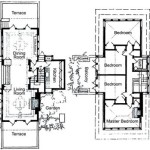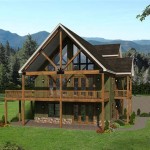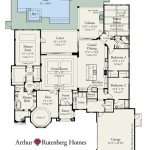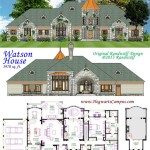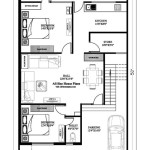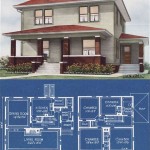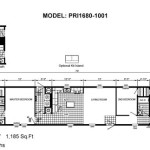Large Mansion House Plans: A Guide to Design and Considerations
Large mansion house plans represent the epitome of residential architecture, embodying grandeur, spaciousness, and luxurious living. Developing these plans requires a comprehensive understanding of architectural design principles, engineering considerations, and the specific needs and preferences of the homeowner. This article provides an overview of the key aspects involved in designing large mansion house plans, exploring the practicalities, aesthetics, and regulations that must be addressed.
The scale of a mansion presents unique challenges and opportunities compared to smaller residential projects. The design process must meticulously balance the creation of expansive living spaces with the maintenance of a comfortable and functional home environment. This balance requires careful consideration of spatial relationships, natural light, and the integration of various amenities.
Before embarking on the design phase, a thorough assessment of the site is essential. The topography, soil conditions, drainage patterns, and orientation of the land will significantly influence the layout and construction of the mansion. Moreover, local zoning regulations, building codes, and environmental restrictions must be strictly adhered to throughout the project.
The initial stage involves developing a detailed program that outlines the homeowner's lifestyle, preferences, and functional requirements. This program should encompass the number of bedrooms and bathrooms, the desired size and layout of living and dining areas, the inclusion of specialized spaces such as home offices, gyms, or media rooms, and any specific accessibility needs. Understanding the homeowner's vision is paramount to creating a design that truly reflects their individual style and aspirations.
Following the program development, architects and designers begin to translate these requirements into preliminary sketches and floor plans. These schematic designs explore various spatial configurations and circulation patterns, considering factors such as natural light, views, and privacy. The goal is to achieve a harmonious flow between different areas of the house, creating a sense of unity and cohesion.
Defining Spatial Relationships and Circulation
One of the most critical aspects of large mansion house plans is defining the spatial relationships between different areas of the house. The layout should promote a comfortable and logical flow, minimizing unnecessary corridors and maximizing the use of available space. Consideration must be given to the separation of public and private areas, ensuring that living spaces are distinct from bedrooms and other personal areas.
The circulation patterns within the mansion should be intuitive and efficient. The design should consider how occupants will move between different rooms and floors, optimizing the placement of staircases, hallways, and elevators. In large mansions, elevators are often necessary to provide accessibility for all residents and guests. The positioning of these features is crucial to preserving the aesthetic integrity of the design.
The design team must also consider the impact of natural light on the interior spaces. Large windows and skylights can bring ample natural light into the mansion, creating a bright and airy atmosphere. However, it is important to manage the amount of sunlight entering the house to prevent overheating and glare. Proper shading devices, such as overhangs and blinds, can help to control the intensity of sunlight and maintain a comfortable indoor environment. Orientation of the house is also crucial to maximizing the benefits of sunlight while minimizing negative impacts.
In addition to natural light, artificial lighting plays a vital role in creating a welcoming and functional home. The lighting design should incorporate a variety of fixtures and techniques to create different moods and emphasize architectural features. Recessed lighting, pendant lights, and sconces can be used to create layers of light, adding depth and character to the interior spaces. Smart lighting systems can be integrated to allow for precise control over lighting levels and energy consumption.
Incorporating Amenities and Special Features
Large mansion house plans often include a range of amenities and special features that enhance the living experience. These features may include swimming pools, home theaters, gyms, wine cellars, libraries, and even indoor sports courts. The integration of these amenities requires careful planning and coordination to ensure that they are seamlessly incorporated into the overall design.
Swimming pools are a popular addition to many mansions, providing a recreational space for relaxation and exercise. The design of the pool area should consider safety, privacy, and aesthetics. The pool should be positioned to maximize sun exposure and minimize the impact of wind. Landscaping can be used to create a secluded and tranquil environment around the pool.
Home theaters offer a dedicated space for enjoying movies and entertainment. These rooms should be designed with acoustics in mind, incorporating soundproofing materials and specialized speaker systems. The seating arrangement should provide optimal viewing angles, and the lighting should be adjustable to create a cinematic atmosphere.
Gyms and fitness centers are another common amenity in large mansions. These spaces should be equipped with a variety of exercise equipment, including treadmills, elliptical machines, and weight training systems. The flooring should be durable and slip-resistant, and the lighting should be bright and invigorating. Mirrors can be used to enhance the sense of space and provide visual feedback during workouts.
Wine cellars provide a controlled environment for storing and aging wine. These spaces should be temperature-controlled and humidity-controlled to ensure that the wine is properly preserved. The design of the wine cellar should also be aesthetically pleasing, incorporating racks and shelving that showcase the wine collection. Tasting areas can also be included to provide a space for enjoying the wine.
Addressing Engineering and Structural Considerations
The design of large mansion house plans requires close collaboration between architects, engineers, and contractors. The structural integrity of the mansion is paramount, and the engineering design must account for factors such as wind loads, seismic activity, and soil conditions. The foundation must be strong enough to support the weight of the building, and the framing must be designed to resist lateral forces.
The mechanical systems in a mansion are also more complex than those in a smaller house. The heating, ventilation, and air conditioning (HVAC) system must be designed to provide comfortable temperatures throughout the house, regardless of the weather conditions. Energy efficiency is also an important consideration, and the HVAC system should be designed to minimize energy consumption. Smart home technology can be utilized to optimize energy usage and control various aspects of the home environment.
Plumbing systems in a mansion are also more extensive, requiring careful planning and coordination. The design should consider the placement of water fixtures, such as sinks, toilets, and showers, as well as the routing of water pipes and drain lines. The plumbing system should be designed to provide adequate water pressure throughout the house and to prevent water leaks and damage.
Electrical systems in a mansion are also more complex, requiring a greater number of circuits and outlets. The design should consider the placement of electrical fixtures, such as lights, appliances, and electronic devices, as well as the routing of electrical wires and cables. The electrical system should be designed to provide adequate power to all areas of the house and to prevent electrical hazards.
Furthermore, sustainable design practices should be integrated into the project. This includes using energy-efficient appliances, incorporating renewable energy sources like solar panels, and utilizing sustainable building materials. Water conservation measures, such as low-flow fixtures and rainwater harvesting systems, can also be implemented to reduce the environmental impact of the mansion.
Developing large mansion house plans is a complex and multifaceted process that requires expertise in architectural design, engineering, and construction. By carefully considering the spatial relationships, amenities, and structural considerations, it is possible to create a luxurious and functional home that meets the unique needs and aspirations of the homeowner. The integration of sustainable design principles further enhances the value and longevity of the mansion, ensuring that it remains a beautiful and environmentally responsible residence for generations to come.

Marvelous Mansion Home Plans 1 Luxury Floor Plan House Dream

Mansion Floor Plan Plans Vintage House

Large Luxury Home Plans With S Houseplans Blog Com

Beach House Plan Caribbean Island Mansion Home Floor Luxury Plans

Humber House Plan Mansion Floor Luxury Plans

Large Luxury Home Plans With S Houseplans Blog Com

What Is In A Set Of House Plans Castle Mansion Floor Plan

Large House Plan Examples

Castillo Desert Sonoran Elevation Courtyard House Plans Floor
European Flair Castle House Plans Houseplans Blog Com

